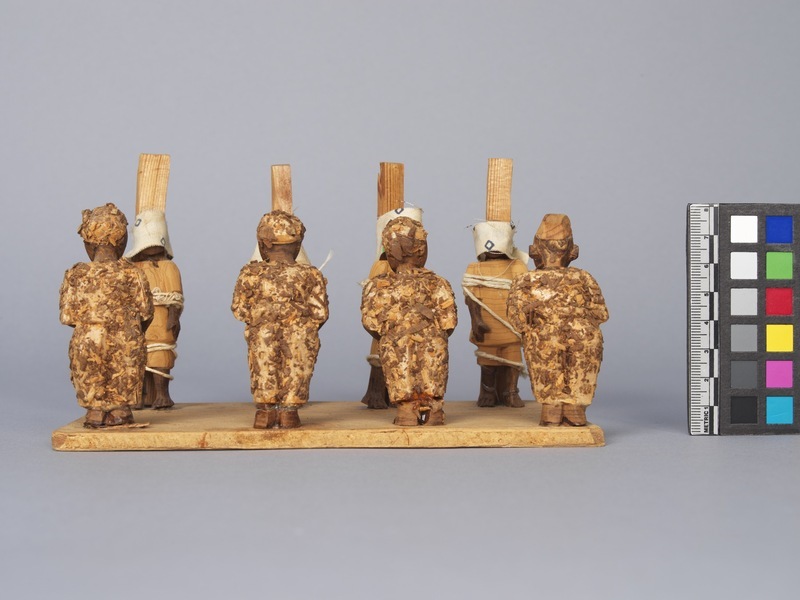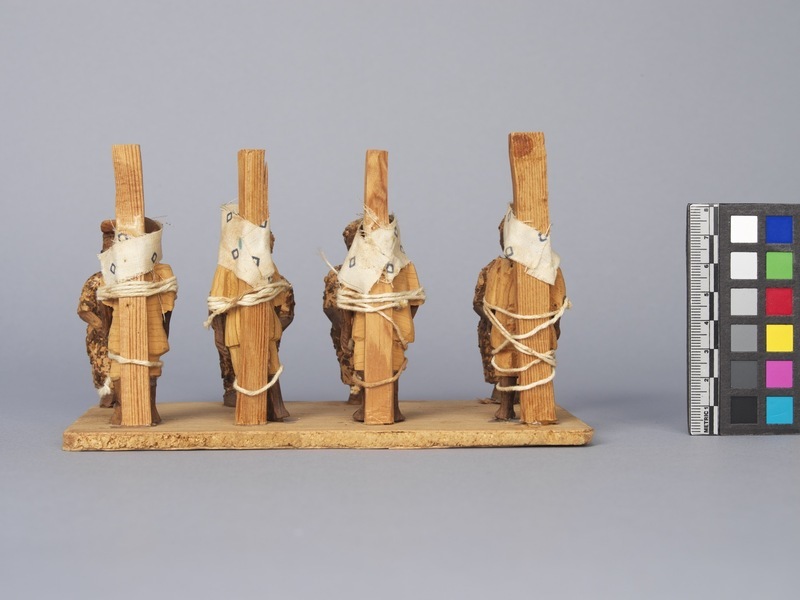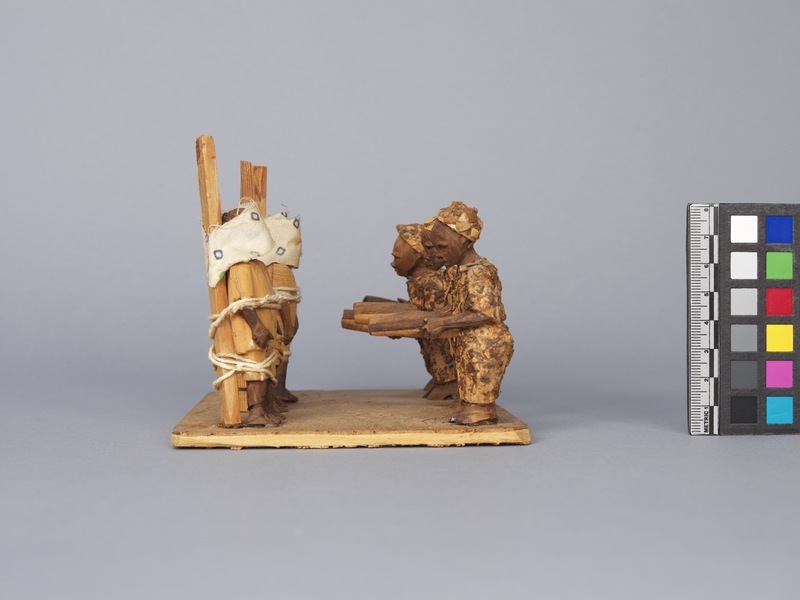Thorn Carving Item Number: 3326/31 from the MOA: University of British Columbia



Description
Thorn carving depicting a firing squad execution scene (part a). Figures adhered to a rectangular particle board base. Along one edge are four military figures in army fatigues (layered wood chips) armed with large guns - one figure detached and detached head. Opposite are four condemned figures who are each tied to a post and blindfolded. The inscription on the base reads: "Bar Beach, Lagos, Nigeria. 25 May 1971. Public execution televised throughout federation."
History Of Use
Thorn carvings are miniatures depicting scenes from Nigerian life. Carving in this particular manner, however, began circa 1930. Similar to a tableau vivant, thorn carvings are meant to preserve moments in both time and space. Thorns vary in size: they can be as large as 12.7 cm long and 9.6 cm wide. The wood is comparatively soft and easily carved. The light yellow-brown thorn and the dark brown thorn come from the Ata tree; the light brown thorn comes from Egun trees. The parts are glued together with a viscous paste made from rice cooked with water. They are carved by men.
Narrative
Bar Beach was one of the most popular beaches in Nigeria. After independence in 1960 the country fell under the dictatorship of a military junta (1966 to 1979, and again 1983 to 1999). After the 30-month civil war that ended in 1970, Bar Beach was the location of the many executions that became commonplace from the early 1970s to the late 1980s, in response to a sudden “surge in crime.” These were public events with thousands of spectators, and were also televised nationally.
Item History
- Made in Ibadan, Nigeria ? on May 5, 1971
- Owned by Jack Lieber before 2015
- Owned by Iris Lieber before June 18, 2018
- Received from Iris Lieber (Donor) on June 18, 2018
What
- Name
- Thorn Carving
- Identification Number
- 3326/31
- Type of Item
- carving
- Material
- atum thorn, egun thorn, adhesive, wood and fibre
- Overall
- height 10.4 cm, width 18.3 cm, depth 12.2 cm
Who
- Culture
- Yoruba
- Previous Owner
- Jack Lieber and Iris Lieber
- Received from
- Iris Lieber (Donor)
Where
- Holding Institution
- MOA: University of British Columbia
- Made in
- Ibadan, Nigeria ?
When
- Creation Date
- on May 5, 1971
- Ownership Date
- before 2015 and before June 18, 2018
- Acquisition Date
- on June 18, 2018
Other
- Item Classes
- carvings & sculpture
- Condition
- fair
- Accession Number
- 3326/0031